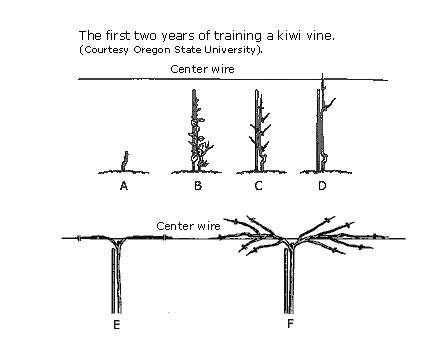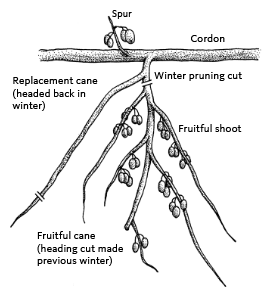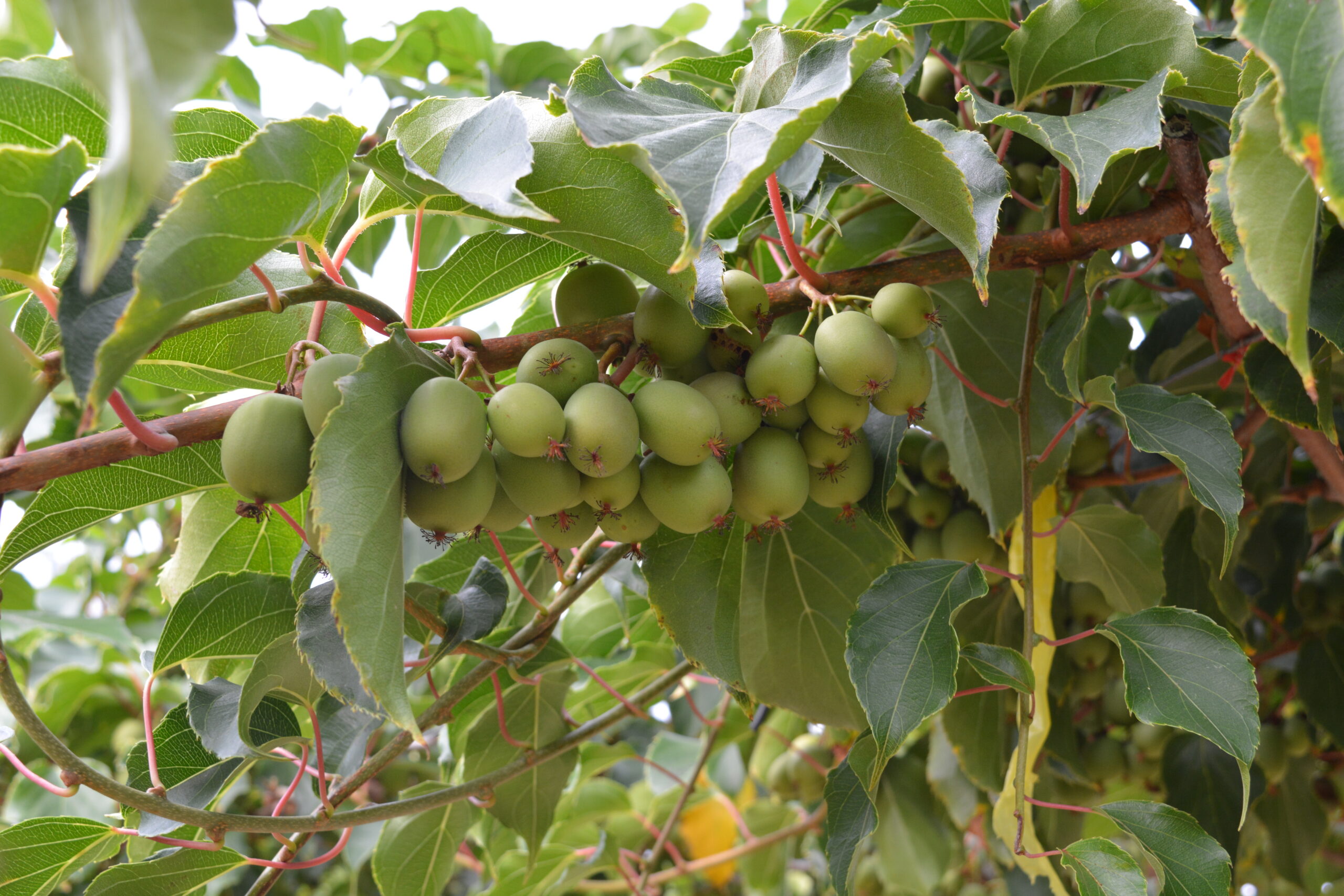growing Kiwis
Types of Kiwis
The popular fuzzy kiwi, Actinidia deliciosa (left), is a subtropical vine that grows up to 30′ long and produces fuzzy brown fruit the size of large eggs. The fruit have a tough skin that must be peeled off before eating. Fuzzy kiwi vines are normally winter-hardy to somewhere between 0°F and 10°F, depending upon degree of plant dormancy.
The hardy kiwi, Actinidia arguta (middle), differs from the fuzzy kiwi in that the fruit are smaller, 1″ across, shiny green, and can be eaten without peeling. Hardy A.arguta kiwi vines are cold-hardy to -25°F. Another hardy kiwi, Actinidia kolomikta, is hardy to -40°F and often has variegated foliage (right).
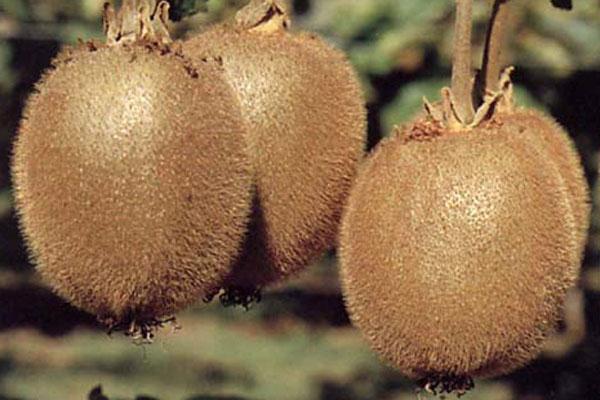
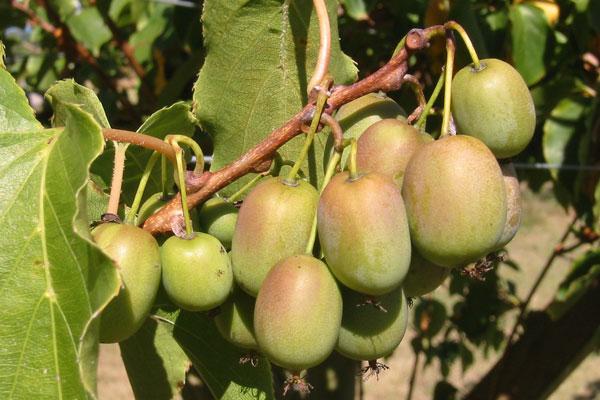
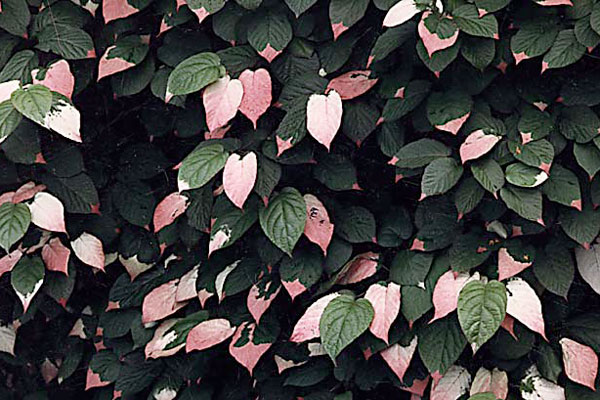
Site Selection & Pollination
Kiwis prefer rich, well-drained soil with ample summer water. When planting kiwis, the best site is one that is not subject to early fall freezes or late spring frosts. The trunks of the fuzzy kiwi vines are the most susceptible to winter damage and can be protected by wrapping them in the winter. Neither home nor commercial growers of kiwi in the Pacific Northwest have reported any serious insect or disease problems.
Kiwi is a dioecious plant: male flowers (right) and female flowers (left) are produced on separate plants. To cross-pollinate, interplant male vines with the female fruit-producing vines. Pollen from one male vine can pollinate up to eight surrounding female vines. The male vine needs to be the same species as the female vines (male A. arguta kiwis can pollinate female A. arguta, male A. deliciosa cannot). Vines usually do not begin to bear fruit until they have grown for 4 or more years. Maximum production is attained at about 8 years.
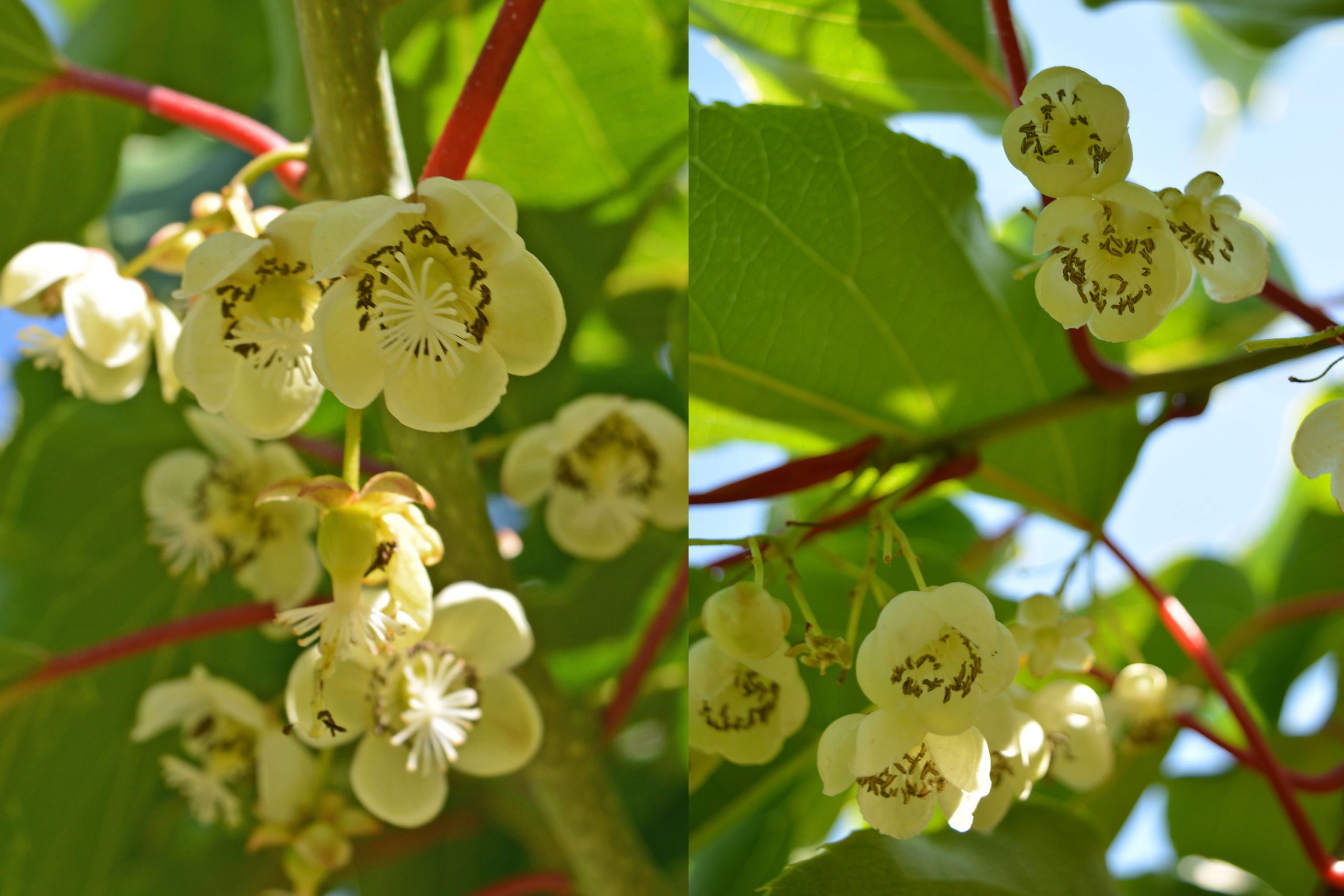
training & trellising
Kiwis are incredibly vigorous vines and require very sturdy trellising. The best trellis for ease of harvest and pruning for the home gardener is a 6′ T-bar trellis made of treated post set in concrete. Space three to five 12-gauge horizontal wires at 1′ – to 1 ½’ intervals and space plants 15′ to 20′ apart within the trellis. A typical T-bar trellis consists of posts with a 5- to 6- foot (depending on row width) long cross arm extending across the post. The kiwi fruiting canes are tied to wires on top of the cross arm.
All diagrams courtesy of Oregon State University
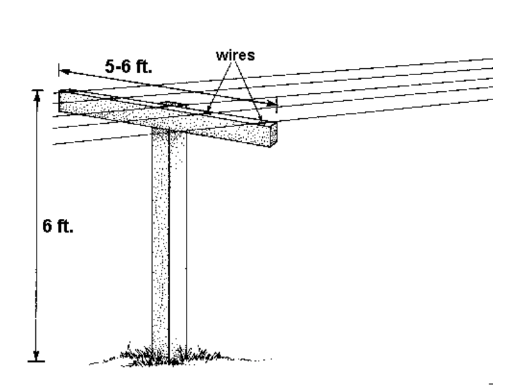
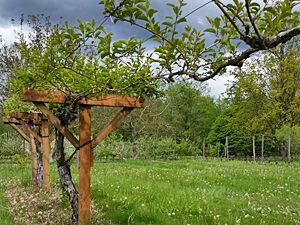
Establishing a New Vine
(A-D) Develop the young vine by pruning back to 2 buds at planting. Train the strongest shoot as the trunk, removing all others. If it loses vigor, cut it back and train the strongest shoot that pushes. Continue to remove other shoots (this may take up to 2 growing seasons), cutting back the trunk to just below the center wire.
(E) Choose two shoots to train along the center wire as your permanent lateral arms, also called cordons. Cut back to 1/4-inch diameter in the dormant season (late December to mid-February). The following season, choose a shoot from each cordon to continue training to extend the cordon. Again, prune the shoots to ¼ inch diameter in the dormant season. Continue this process each season until your cordons are at their desired length. This process establishes larger diameter cordons to support fruit production.
(F) Shoot growth the following year. During the next dormant pruning, select shoots at 8-12 inch intervals along the cordons and remove the rest. Train these shoots out from the cordons perpendicular to the wires (right). These are your fruiting canes. Fruit will develop on new shoots next season from these canes and hang below the trellis wires. Prune these canes in dormant season back to wood ¼ inch in diameter.
Pruning Established Vines
In the spring, pinch back the growing fruiting shoots to six leaves. Pinch off any erect water sprouts on top of the trellis. During the summer, continue to pinch off the majority of developing canes from the cordon. Leave a number sufficient to serve as replacements for older canes that are no longer fruitful.
During the winter, cut now two-year-old canes back severely. Leave only one to three fruiting shoots that bore fruit the previous summer. These shoots will bear new shoots and fruit the next spring and summer.
